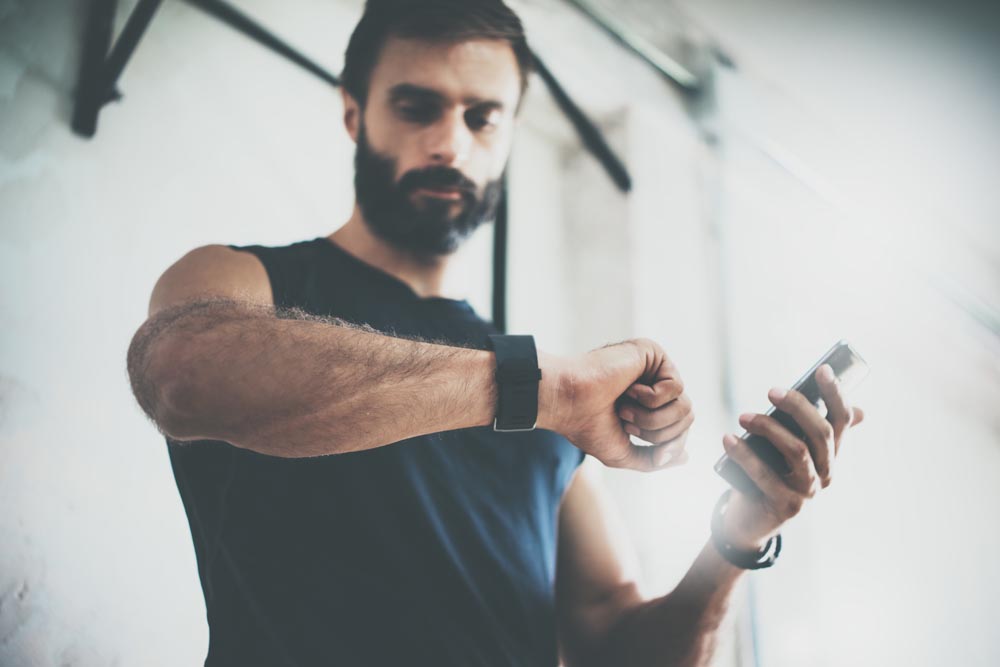Labelled as sci-fi just a few years ago and yet now reality: health apps, video doctors’ appointments and smart watches that save lives. The advantages of digital health are obvious – but at what price? Asks //next columnist Markus Sekulla.

Health is our most valuable asset – something that has become all too apparent in recent months. In my opinion, and here I’m anticipating things, it’s also something for which it can even be worth accepting compromises in terms of privacy. How you’d like to see the handling of your own data managed remains a very personal decision.
On the other hand, the thought of strangers being able to access my (health) data is nightmarish. In many conversations, the main comment I’ve heard among my circle of friends is: “Who’d be interested in my data anyway?” It seems clear, though, that Big Data sees things differently, and that large volumes of anonymous data allow frighteningly accurate conclusions.
I actually have a very positive opinion of the digital health sector. Between 2005 and 2015, I spent a lot of time studying and working in China and the USA. Countries in which putting better technology before data protection is not viewed so narrowly. There, as a result of many conversations, the relationship with my data became more casual. This was very much in line with the principle that, if there are possibilities or apps that have a positive effect on my life, I’m quite willing to share data – even sensitive health data – in return. You could also say, to pay for it with the data. But I’m well aware that not everyone shares that view.
Which brings us to digital health apps: With ever-newer technologies, people now have possibilities for detecting diseases early on, for example, or making life easier and even prolonging it. Let’s dive right in:
The digital patient file is constantly under fire and raises issues. What happens with the data? Who has access to it? What data is stored in the file? Can patients look at the information about them?
Where information about patients is stored, it allows large datasets to be analysed and used to create new research approaches and better methods of treatment. At the same time, the question arises as to how the sharing of information explicitly looks – and what protective mechanisms there are in the background. Patient have concerns, particularly as regards data privacy and data security.
And here their fear is justified: cybercriminals have the possibility to capture data illegally if the infrastructure is not adequately protected. Just recently, the Chaos Computer Club managed to obtain access authorisations to the telematics network to which more than 100,000 practices have so far been connected (click here for more information). In future, the network will be used to exchange digital patient files and electronic prescriptions. In the case of a genuine cyberattack, the consequences would be disastrous – the data could be downloaded, altered or subsequently sold.
Health apps are also constantly under fire. Behind the development of applications are, in particular, advertisers or companies which get full access to and sell the data thereby generated. Lack of transparency about algorithms and the way they work also involves a high risk for users.
But it’s not only business that has an interest in the data. In the case of pandemics, such apps can be used to monitor people’s health data. Probably the best known example of this is the Robert Koch Institute data donation app launched at the start of the coronavirus outbreak.
What have already existed for many years in the USA and are also used primarily by young insurance customers are bonus programmes for people with health insurance. With these, data are voluntarily passed on to the health insurance company, and in return the insureds receive different types of bonuses – even Amazon vouchers.
I’m a fan of digital applications to improve my life. However, I haven’t managed to write a purely positive article on the subject. Nevertheless: My life has clearly become better due to digital offerings. Even if, based on my user behaviour, Headspace Inc. may now know what my emotional state is like on rainy November days. However, it’s difficult for many digital health applications and data paths to get through to the average consumer. There are fears about them not only in Germany, and that increases the rejection of digital health technologies. These fears will have to be dispelled in the future.
Text: Markus Sekulla
Most popular